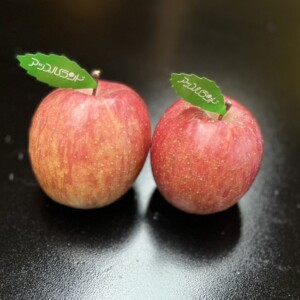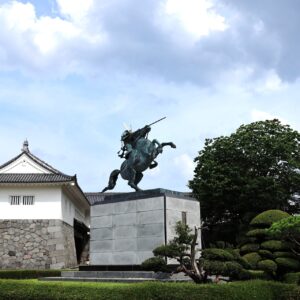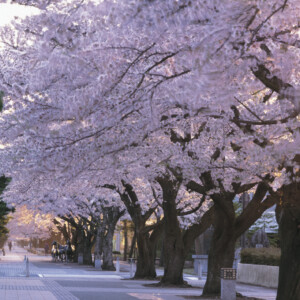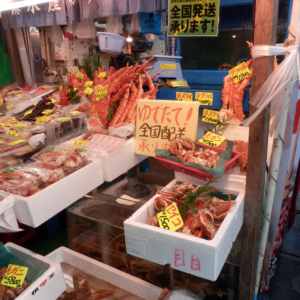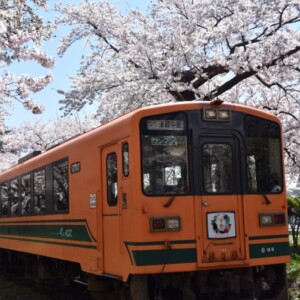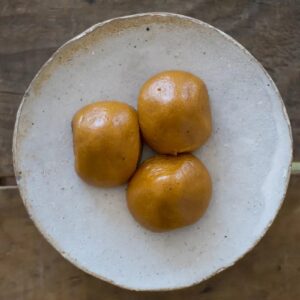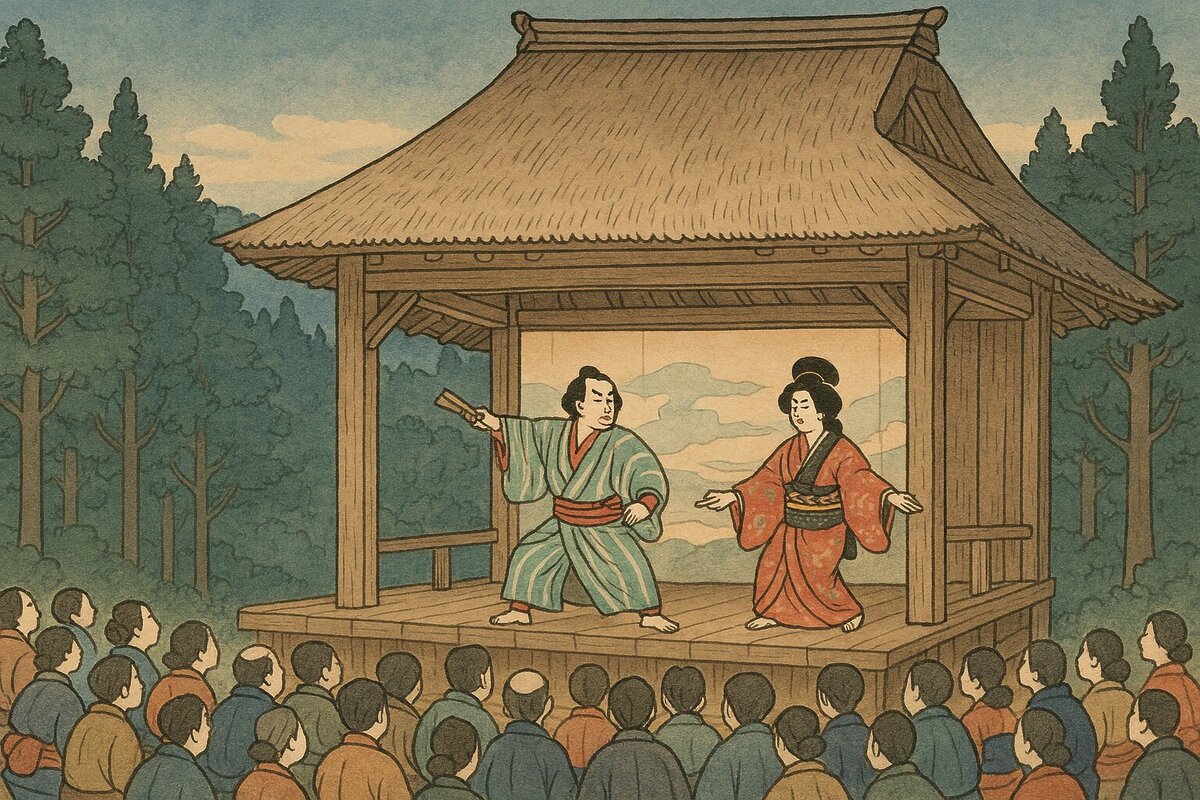
What is Hinouegi Village, a hidden village where villagers pass on kabuki? [Fukushima Prefecture]
table of contents
- 1 Hinoemata is the northern gateway to Oze
- 2 Hiedagata, where the noble family who lost the war settled
- 3 During the Edo period, it developed as a distribution hub on the old Numata Kaido road
- 4 Edo Kabuki brought to life by villagers on pilgrimages to Ise Shrine
- 5 "Hinoemata Kabuki" is performed three times a year on the "Hinoemata Stage"
- 6 The venue is a shrine forest with no roof except for the stage
- 7 Kabuki tradition museum "Chiba no Ie" exhibits materials related to "Hinoemata Kabuki"
Hinoemata Village is a mountain village located in the southwesternmost part of Fukushima Prefecture, bordering Gunma, Tochigi, and Niigata prefectures. It covers an area of approximately 340 square kilometers, 98% of which is covered by forests and fields. With a population of approximately 550 (as of January 2020), it is the least densely populated village in Japan. The Hinoemata Village Office is located at an altitude of approximately 939 meters, in an area with heavy snowfall, with up to 3 meters of snow accumulating in winter, and is said to be Fukushima Prefecture's most remote area
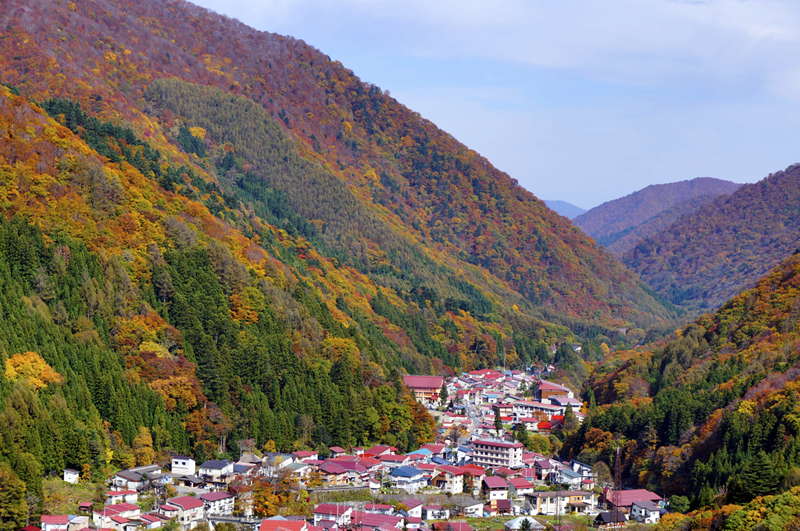
Hinoemata is the northern gateway to Oze
Hinoemata Village is Oze National Park, attracting many hikers and tourists. Oze is Japan's largest high-altitude marshland, stretching from 1,400m to 1,600m above sea level, and includes Lake Oze, Ozegahara, and Oe Marsh, and is centered around Mount Hiuchigatake (2,356m above sea level), the highest peak .
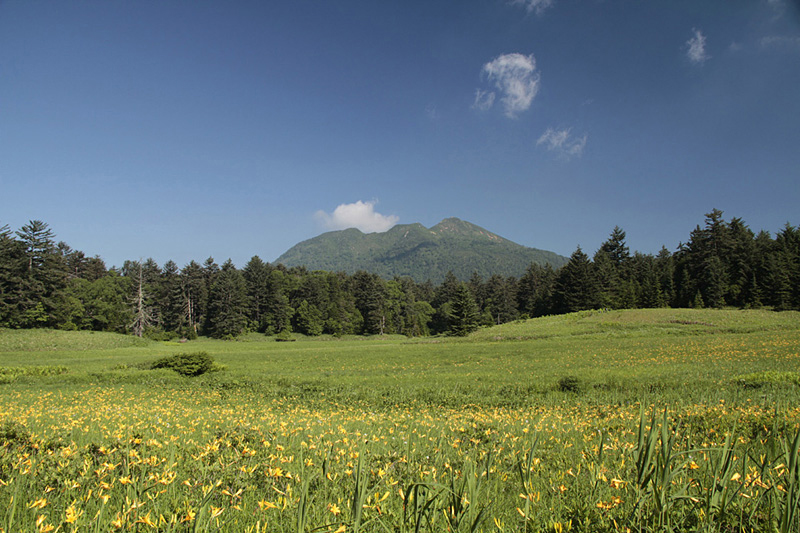
Hiking course from Hinoemata Village to Oze
Lake Ozenuma Course
[Hinoemata Village - Nanairi (private cars only up to this point, parking available) → (bus available from Hinoemata Village/Miike to Numayama Pass) → Numayama Pass → Lake Oze] From Numayama Pass to Lake Oze, it is about 6.5km through the Oe Marsh, a course that takes about 2 hours to walk and is suitable for beginners
Ozegahara Course
[Hieda Village → Oike (private cars only up to here, parking available) → Urahiuchi Forest Road (Oike Tashiro, Hime Tashiro, Kamidashiro, Tenjin Tashiro, Usagi Tashiro) → Hot Spring Hut] Approximately 3 hours 30 minutes on foot, 4 hours 20 minutes if you stop by Sanjo Falls
[Onsen hut → Miharashi → Ryugu/Ushikubi (crossing Ozegahara) → Yamanohana] Approx. 40 minutes on foot
There are several courses, but all of them trekking courses lasting at least two days . Wear clothes and equipment that can withstand bad weather, and stay in mountain huts.
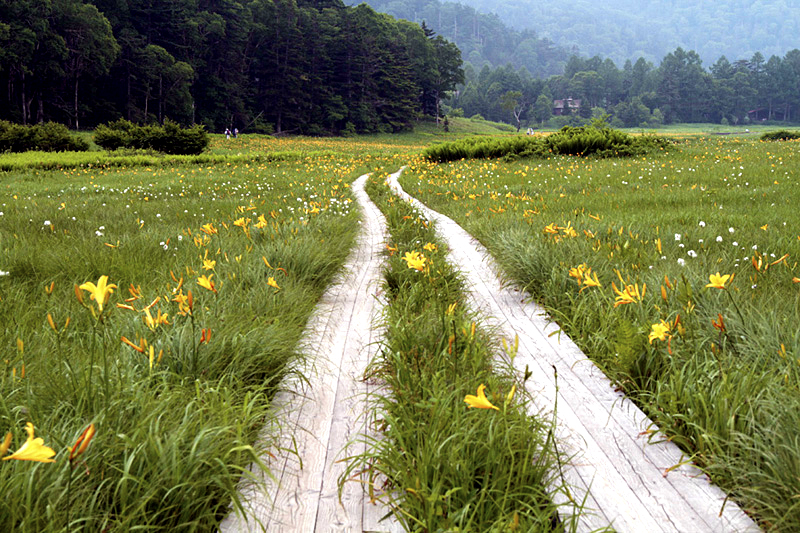
Hiedama Village is also a base for climbing 2,000m-class peaks such as Mt. Hiuchigatake and the surrounding mountains of Aizu-Komagatake (2,133m), Mt. Hiragatake (2,141m), and Mt. Shibutsu (2,228m)
Oze Hinoemata Onsen Tourism Association <Information>
- Name: Oze Hinoemata Onsen Tourism Association
- Address: 1155-1 Mitori, Hinoemata Village, Minamiaizu District, Fukushima Prefecture
- Phone number: 0241-75-2432
- URL: Oze Hinoemata Onsen Tourism Association
Google Map
Hinoemata Village's greatest asset is undoubtedly its abundant nature, represented by Oze, but this small village is also home to a folk performing art called "Hinoemata Kabuki," which has been performed by the villagers since the Edo period and is still cherished and preserved today
Hiedagata, where the noble family who lost the war settled
a large number of Jomon pottery vessels have been discovered in Hinoemata Village , it is believed that people have lived there for quite some time. Records remain that a man named Fujiwara Kaneharu (pronunciation unknown) moved to the village from Kii Province (Kinokuni, Wakayama Prefecture) in 794, during the early Heian period. Kaneharu was from Hoshi no Sato (an ancient place name) in Muro County in the southern part of the Kii Peninsula, and so he took the surname "Hoshi." Even today, "Hoshi-san" ranks first in the surname rankings in Hinoemata Village, accounting for around 40% of the population.
There is a legend that Hinoemata village was settled by refugees from the Heike clan, and that the Tachibana clan, who were annihilated by Oda Nobunaga, took refuge there. As if to prove this legend, there are many surnames derived from the Taira clan, such as "Hirano" (just under 40%) and "Tachibana" (just over 10%), and when "Hoshi" is added, these three surnames make up an astonishing 90% of the total
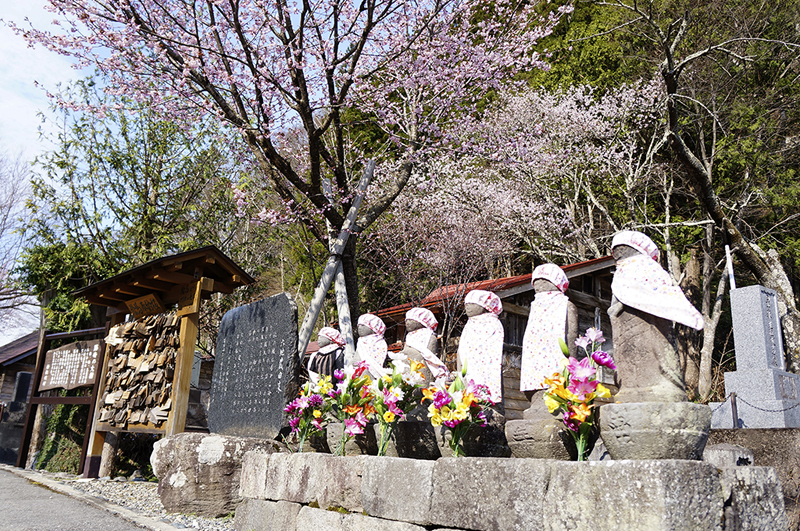
Of the four surnames that were considered prestigious for the nobility during the Heian period - Fujiwara, Taira, Minamoto, and Tachibana - it is said to be extremely rare that there are three surnames that are all related to Fujiwara, Taira, and Tachibana
During the Edo period, it developed as a distribution hub on the old Numata Kaido road
Hiedamata is deep in the mountains and was a place where refugees hid, but from the Edo period to the early Meiji period, it the old Numata Kaido (Aizu Kaido) . The old Numata Kaido was a road that crossed Numayama Pass from the Aizu side and ran from the shores of Lake Oze to Numata in Kozuke Province (Gunma Prefecture). It was called the Numata Kaido from the Hiedamata side and the Aizu Kaido from the Numata side, and it overlaps with the current walking path to Lake Oze.
The old Numata Kaido road was used to transport mainly rice and sake from the Aizu side, and salt and oil from the Numata side. Because it was a mountainous road, trading huts were set up on the shores of Lake Oze to exchange goods. Hinoemata, located at the foot of Oze, served as a collection point on the Aizu side
Edo Kabuki brought to life by villagers on pilgrimages to Ise Shrine
During the Edo period, Hinoemata was relatively wealthy, and pilgrimages to Ise Shrine were popular. In the late Edo period, villagers who went on a pilgrimage to Ise Shrine were so impressed by a Kabuki performance they saw in Edo on the way that they would return to their village and tell the story to their fellow villagers. This was the beginning of Hinoemata Kabuki
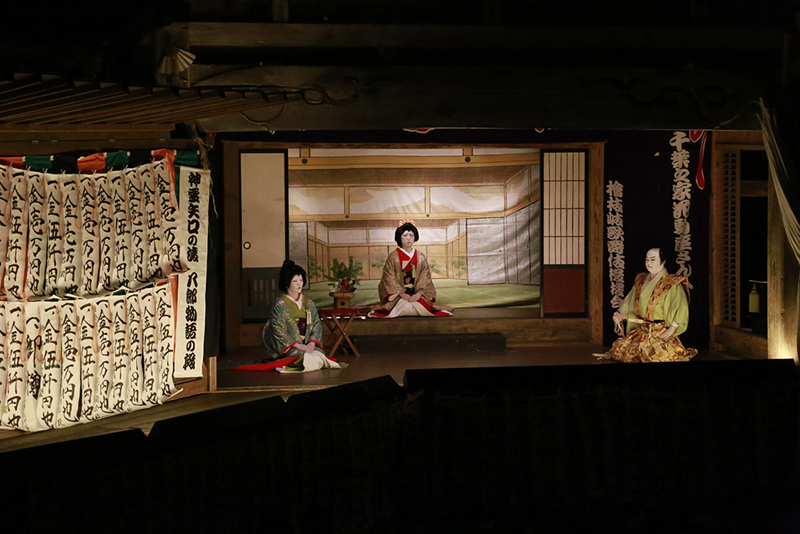
Although Hiedagata Kabuki began as a form of imitation, its appeal spread to the villages of Aizu, and it became so popular that it is said that each village had a troupe. As each troupe competed with each other, it evolved into a form closer to authentic Edo Kabuki
"Hinoemata Kabuki" is performed three times a year on the "Hinoemata Stage"
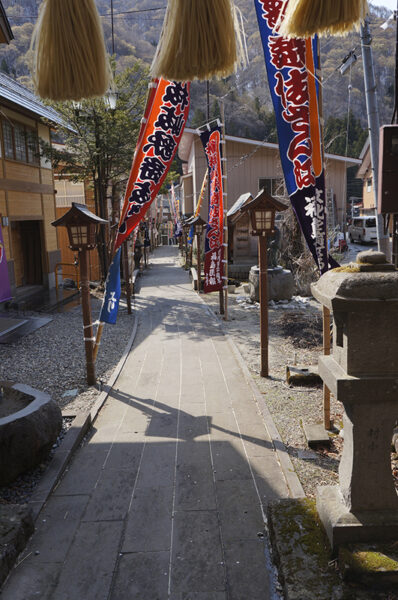
"Hinoemata Kabuki" is performed on the "Hinoemata Stage" every year on May 12th, August 18th, and the first Saturday of September
Currently, there is only one Hiedamata Kabuki troupe in Hiedamata Village, and all the actors and backstage staff are villagers who have other jobs and are carrying on the tradition. Despite the fact that there are no professional actors, the skilled acting goes far beyond the realm of "country theater."
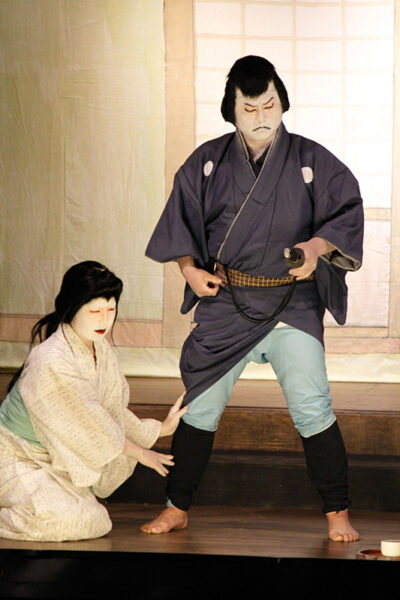
"Hinoemata Kabuki" is performed the "Chiba no Ie Hanakomaza ," a troupe with about 30 members led by the 11th leader, Shoji Hoshi. Performances are held three times a year on the "Hinoemata Stage."
The venue is a shrine forest with no roof except for the stage
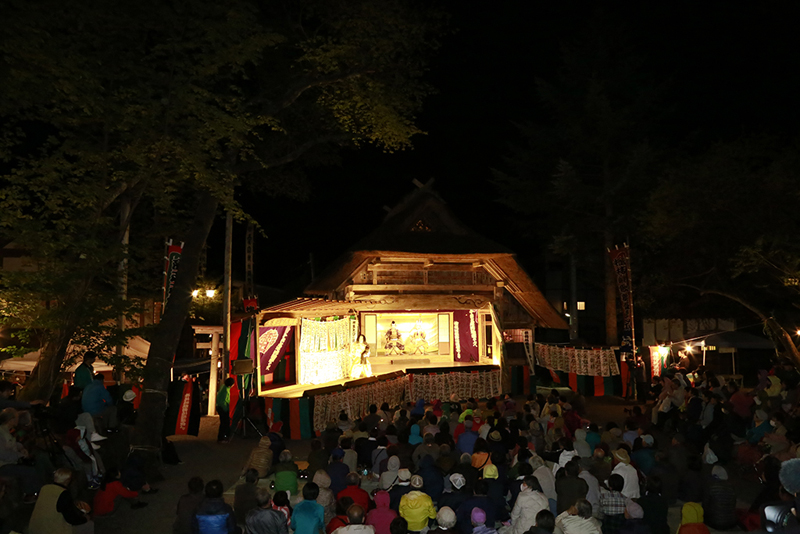
The "Hieda Stage" is a stage built within the grounds of Hieda's guardian shrine , and was rebuilt in its original form around 1893 (Meiji 20) after it was destroyed by fire. The stage itself is covered, but the audience seating area does not have a roof.
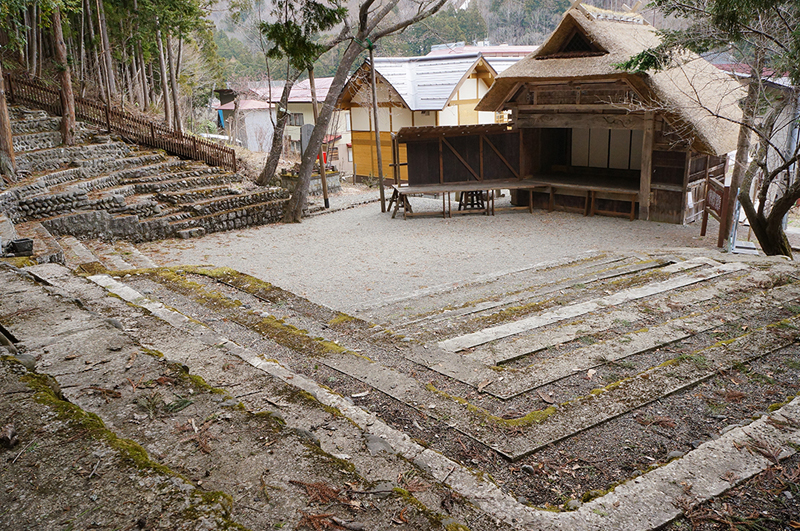
The Hiedama Stage is designated as an Important Tangible Folk Cultural Property of Japan, and Hiedama Kabuki is designated as an Important Intangible Folk Cultural Property of Fukushima Prefecture
"Hinoemata Kabuki" will be performed even in rainy weather if possible. Seating is on a first-come, first-served basis. The venue can accommodate approximately 1,200 people
Hinoemata Kabuki <Information>
- Facility name: Hinoemata Stage
- Address: 679 Idaira, Hinoemata Village, Minamiaizu District, Fukushima Prefecture
- Phone number: 0241-75-2342 (Hinoemata Village Board of Education)
- Date:
- May 12th / Kabuki performance dedicated to the Atago Shrine Festival
- August 18th / Kabuki performance dedicated to the guardian deity
- First Saturday of September / Kabuki Evening
- Opening times: Doors open at 18:00, performance begins at 19:00
- Admission fee:
- Free on May 12th and August 18th
- 1,000 yen on the first Saturday of September (free for guests staying overnight in the village)
- *The number of performances may vary depending on the year
Google Map
Kabuki tradition museum "Chiba no Ie" exhibits materials related to "Hinoemata Kabuki"
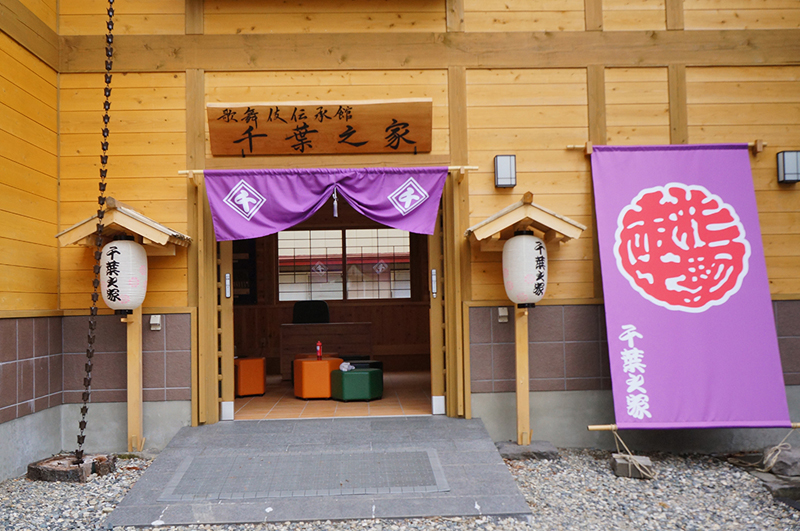
The Kabuki Heritage Museum "Chiba no Ie" is a museum dedicated to Hiedaga Kabuki, and displays various materials related to Hiedaga Kabuki, which has been passed down for 270 years.
Kabuki Tradition Museum "Chiba no Ie" <Information>
- Facility name: Kabuki Tradition Museum "Chiba no Ie"
- Address: 664 Iidaira, Hinoemata Village, Minamiaizu District, Fukushima Prefecture
- Phone number: 0241-75-2342 (Hinoemata Village Board of Education)
- Opening period: Early May to early November
- Opening hours:
- Weekdays and Saturdays: 9:00-16:00
- Sundays and holidays: 8:00-17:00
- Admission fee: Free
- Guide: Generally unmanned on weekdays. A manager is on duty on weekends, holidays, and when Kabuki is performed on stage



![A tour of precious cultural assets that remain in Minami Aizu, the southern part of the Aizu region [Fukushima Prefecture] 002402574](https://jp.neft.asia/wp-content/uploads/2022/11/002402574-150x150.jpg)
![A tour of the 33 remaining Kannon in Minami Aizu. "Thirty-three Kannon" certified as a Japanese Heritage Site [Fukushima Prefecture] 11_MG_9631](https://jp.neft.asia/wp-content/uploads/2022/11/11_MG_9631-150x150.jpg)
![Okuaizu Shoten is born where you can "know, buy, and experience" Okuaizu! [Fukushima Prefecture] Okuaizu store](https://jp.neft.asia/wp-content/uploads/2024/07/sub6-150x150.jpg)
![Everyone knows "that nursery rhyme" was born in Fukushima! A deep dive into the thoughts contained in lyrics and music writing [Fukushima Prefecture] ChatGPT Image July 14, 2025 14_24_04](https://jp.neft.asia/wp-content/uploads/2025/07/30ae0dd891c7824801c92cf1cdc72607-2-150x150.jpg)
![What is "disc dumplings" in Fukushima City? Introducing recommended shops and history [Fukushima Prefecture] Disc Dumplings 1](https://jp.neft.asia/wp-content/uploads/2023/03/31485117_m-150x150.jpg)
![[Fukushima Prefecture] What is Japan's third generation manju, "usukimanju"? Introducing Kashiwaya's famous sweets that continue to be loved by locals 22766289_l](https://jp.neft.asia/wp-content/uploads/2021/11/22766289_l-150x150.jpg)
![The endemic Japanese crayfish, the endemic species of Japanese crayfish, is currently breeding in Odate City! [Akita Prefecture] 26234380_m](https://jp.neft.asia/wp-content/uploads/2024/02/26234380_m-150x150.jpg)

